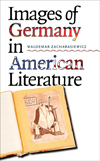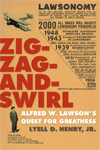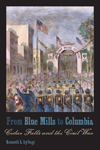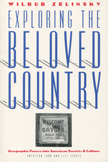Images of Germany in American Literature
“In carefully and strategically selected case studies, Images of Germany in American Literature offers an informative overview of the changing meaning of Germany in American culture, from the Napoleonic Wars to the post–World War II period. The studies of Sinclair Lewis, Gertrude Stein, Kurt Vonnegut, Thomas Pynchon, and William Styron, among others, are particularly exciting and constitute an entirely new synthesis.”—Werner Sollors, Henry B. and Anne M. Cabot Professor of English literature and professor of African and African American Studies, Harvard University
Although German Americans number almost 43 million and are the largest ethnic group in the United States, scholars of American literature have paid little attention to this influential and ethnically diverse cultural group. In a work of unparalleled depth and range, Waldemar Zacharasiewicz explores the cultural and historical background of the varied images of Germany and Germans throughout the past two centuries. Using an interdisciplinary approach known as comparative imagology, which borrows from social psychology and cultural anthropology, Zacharasiewicz samples a broad spectrum of original sources, including literary works, letters, diaries, autobiographical accounts, travelogues, newspaper reports, films, and even cartoons and political caricatures.
Starting with the notion of Germany as the ideal site for academic study and travel in the nineteenth century and concluding with the twentieth-century image of Germany as an aggressive country, this innovative work examines the ever-changing image of Germans and Germany in the writings of Louisa May Alcott, Samuel Clemens, Henry James, William James, George Santayana, W. E. B. Du Bois, John Dewey, H. L. Mencken, Katherine Anne Porter, Kay Boyle, Thomas Wolfe, Upton Sinclair, Gertrude Stein, Kurt Vonnegut, Thomas Pynchon, William Styron, Walker Percy, and John Hawkes, among others.
Zacharasiewicz’s careful writing and rigorous documentation will appeal to scholars and students alike. This unflinching look at German history and the image of Germans in American literature is sure to invigorate a lively debate among scholars on both sides of the Atlantic.
Acknowledgments
1. Introduction: Images of Germany in America
2. Discovering Germany: The Early Nineteenth Century
3. Differing Responses: The Late Nineteenth Century
4. Transatlantic Encounters: Fin-de-siecle Estrangement
5. Cultural Conflicts: The Early Twentieth Century
6. Interlude: Before World War II
7. The Return of Cliches: The World War II Years
8. The Burden of the Past: Post-War Germany
9. Conclusion: A Look toward the Future
Notes
Bibliography
Index






